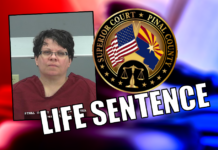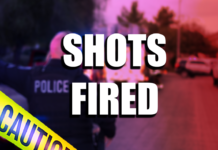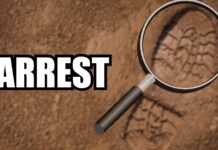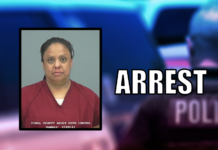
A quail-hunting trip in the Sonoran Desert National Monument brought a rude awakening to a Maricopa resident.
Pockets of discarded backpacks, clothing, food wrappers and water bottles dotted the washes in the canyon. It was clear evidence of people on foot heading north. There were the tell-tale black water bottles tied in place at various locations for a nefarious “underground railroad” of illegal travelers.
That made Kevin Wilkins angry.
What raised the hairs on the back of his neck was the later discovery of full cans of gasoline paired with full water jugs waiting to be picked up. That was the sign of drug smugglers. It was the sign of real danger.
“You never know who’s watching you,” Wilkins said. “And it’s our land, our public land.”
As a hunter, Wilkins, of course, was armed. But he was concerned about casual hikers he encountered in the Sonoran Desert National Monument (SDNM) who not only did not have guns but had not even thought armed self-defense might be necessary.
That is despite years of federal and county efforts to tackle the illegal operations and inform the public of the risks. Finding the balance between invitation and caution has been frustrating for the Bureau of Land Management.
“It’s an issue we’ve been dealing with for a number of years,” BLM spokesman Dennis Godfrey said. “We have not closed lands due to smuggling, so they’re still available to the public. We are obviously advising people that there is potential danger.”
Wilkins said the SDNM, with its beautiful vistas, craggy mountains and tall saguaros, is the perfect example of the Southwest desert landscape.
BLM wants residents to be able to enjoy the beauty of the Sonoran Desert in peace. Godfrey said people who are recreating in daylight hours on monument land are “not in particular danger.”
Wilkins simply wanted to explore the Table Top Wilderness Area in the SDNM south of Maricopa. Some day, he would like to teach his young son to hunt those same hills. His experience in January gave him pause.
His concerns were twofold: the trash left on monument land and the illegal activity continually moving north through the Maricopa area.
“The Sonaran Desert National Monument is used as a corridor for illegal operations,” Godfrey said. “They are coming up from the border on the reservation and coming up through the monument, both there and through the Ironwood Forest National Monument west of Tucson.
“Those two are primary areas. They both border on the reservation; they both are used as conduits to get to transportation corridors.”
The canyons can serve as a funnel for anyone in the area to reach one of the roadways leading out of the wilderness and into Maricopa’s transportation corridor. The trash site Wilkins found up one canyon was news to BLM, which put it on a schedule for cleanup.
“I’ve been on some of those sites, and they can be pretty groaty,” Godfrey said.
The BLM program Reclaim Our Arizona Monuments (Operation ROAM) organizes cleanups and provides security during those cleanup procedures. In the first two months of Operation ROAM, 88 bags of trash were picked up in the SDNM. More than 5,000 pounds of narcotics were seized.
“There have been surges, and the Sonoran Desert National Monument is a key area,” Godfrey said. “One of the things that we typically do is a cleanup of these trash sites, and we’ve done a remarkable job, I think, in the past three years of identifying where those sites are and then getting resources in to clean them up.”
Wilkins’ instinct was to start a community cleanup campaign to get garbage out of the area. Godfrey said that was understandable, but because of the circumstances BLM uses its own federal assets to accomplish the same thing.
“Just in terms of the public going out there to clean up trash, there are some hazards,” he said. “You don’t know what’s in that trash. Have you thought about how you’re going to carry it out of there? Who’s watching you? Who’s going to be in that general vicinity? We think it wise to use our resources.”
BLM does not use community volunteers for cleanup involving illegal operations. Instead, the department contracts with the Arizona Conservation Corps for that effort.
Godfrey said by calling in the location of a trash site, Wilkins was doing exactly what BLM would like the public to do. “And we very, very much appreciate it.”
He recommended to anyone coming across trash sites on public lands to contact the Phoenix district office or SDNM Manager Dave Scarbrough to give them a description and directions.
Most of that kind of debris in the SDNM is aged, obviously having been in the sun for a long time. The signs of drug smuggling are a lot fresher.
According to the Pinal County Sheriff’s Office, this is the time of year that smuggling activity is reinvigorated after a holiday lull. So-called hilltop scouts are back in place in a targeted area west of Maricopa.
According to PCSO spokesman Jim Knupp, the scouts act as traffic guards, “alerting drug smugglers as to law enforcement activities and advising them on which paths to take through the desert.”
PCSO cited the success of last year’s sting operations on the Tohono O’odham Nation as part of its West Desert Task Force. There has been a history of armed hilltop scouts in that area.
In a place like Sonoran Desert National Monument, gas cans and water combinations tend to be left out for others arriving and needing fuel for all-terrain vehicles or other transportation.
Godfrey said something like that is “a point of conflict” and needs to be reported to law enforcement immediately.
“You don’t hang around to see who’s going to show up,” he said.
For most criminals, he said, the sight of hikers taking advantage of the Table Top trails or hunters in the canyons will cause them to move off for a while. Moving illegal products is their mission, not getting into a conflict, Godfrey said.
That is why BLM has chosen to keep the lands open.
“We have lots of acreage and a lot of land to patrol and to be responsible for and not too many officers, so it’s difficult for us,” Godfrey said. “But we’ve made inroads.”
That includes blocking illegal roads. About two years ago, they finished a mile of Normandy barrier near the south border of the SDNM, adding to the natural barriers in the area. It continues to be a game of cat-and-mouse, Godfrey said.






![Alleged car thief released without charges Phoenix police stop a stolen vehicle on April 20, 2024. [Facebook]](https://www.inmaricopa.com/wp-content/uploads/2024/04/IMG_5040-218x150.jpg)





![City gave new manager big low-interest home loan City Manager Ben Bitter speaks during a Chamber of Commerce event at Global Water Resources on April 11, 2024. Bitter discussed the current state of economic development in Maricopa, as well as hinting at lowering property tax rates again. [Monica D. Spencer]](https://www.inmaricopa.com/wp-content/uploads/2024/04/spencer-041124-ben-bitter-chamber-property-taxes-web-100x70.jpg)

![3 things to know about the new city budget Vice Mayor Amber Liermann and Councilmember Eric Goettl review parts of the city's 2024 operational budget with Mayor Nancy Smith on April 24, 2024. [Monica D. Spencer]](https://www.inmaricopa.com/wp-content/uploads/2024/04/spencer-042424-preliminary-budget-meeting-web-100x70.jpg)
